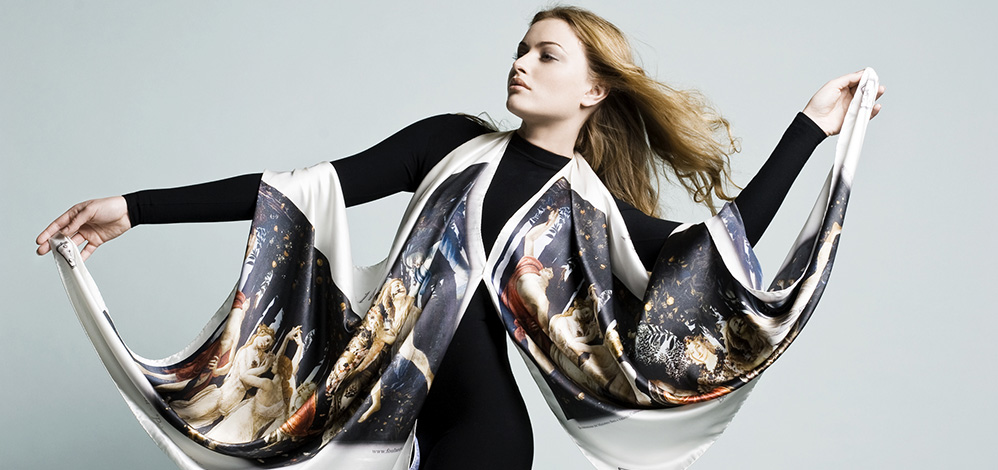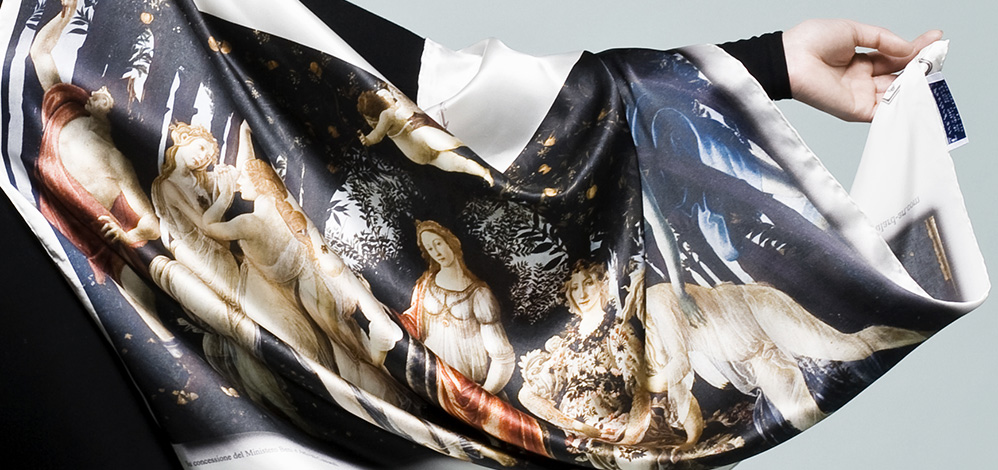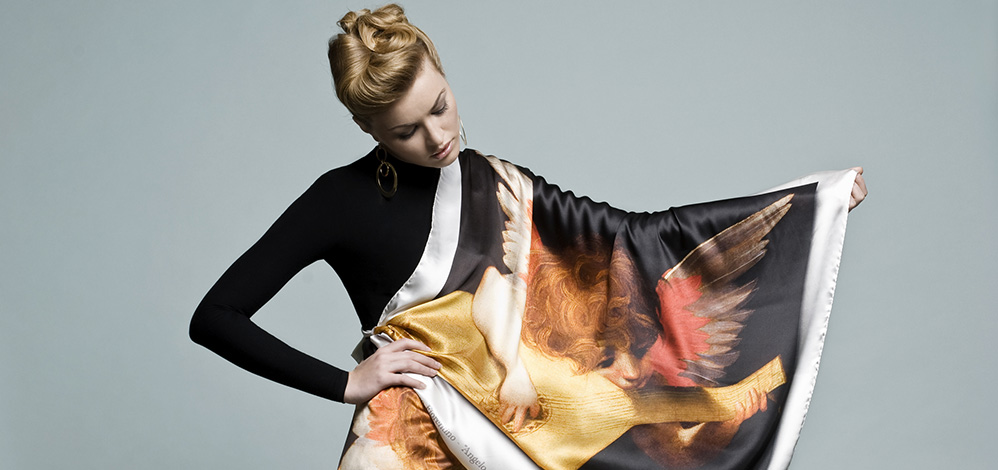ATTENTION!! From August 7 to 24 we are on holidays. Shipment will restart immediately after the holidays
Foulard'Art
Thanks to Foulard'art’s exceptional artistic initiative, you can now actually wear a work of art. The company’s silk foulards with fine reproduction prints of masterpieces by great painters are the fruit of the experience and passion of a group of skilled Italian craftsmen.
You can experience the thrill of actually touching some of the greatest ever painted masterpieces, created using an exclusive reproduction system which respects the integral format of the original works with an exceptionally high level of quality, so much so you will be able to appreciate the detail of the artist’s every brushstroke. The high-definition images have been created by the world’s top museums and reproduction has been authorized by the image copyright owners. "Foulard'art" is an international registered trademark.
"Foulard'art" is only available for purchase through this website, guaranteeing the product you purchase is totally original and of the highest quality







